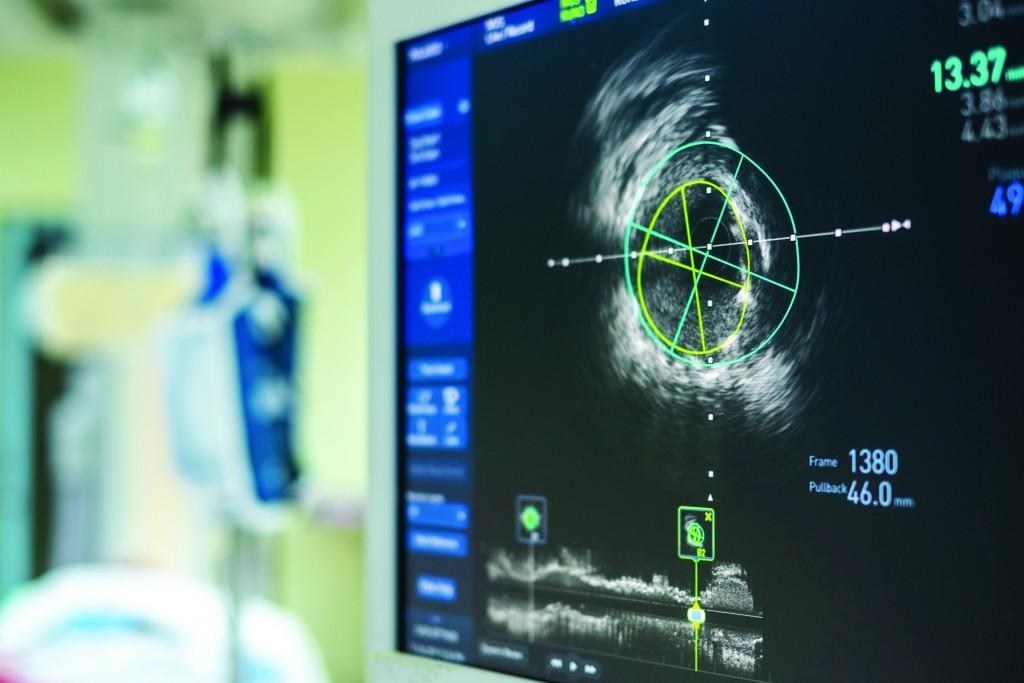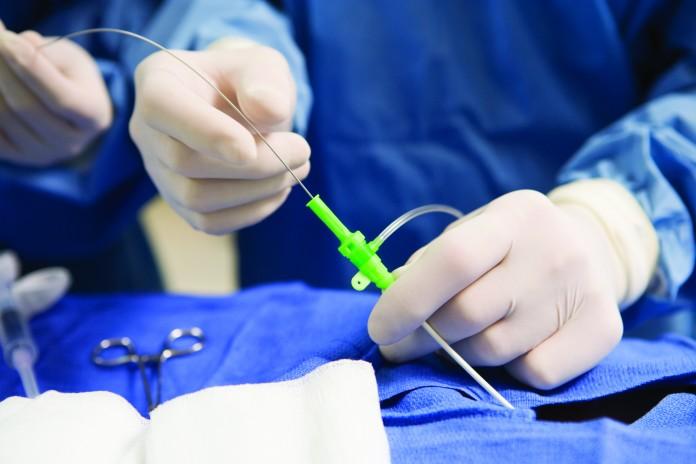Patients with heart conditions often make a stop at St. Mary Regional Medical Center’s cardiac catheterization lab. Discover how cardiologists save lives with minimally invasive techniques in this unit.
What is cardiac catheterization?
“Cardiac catheterization is performed to identify coronary artery disease,” explains Interventional Cardiologist Nikunjkumar I. Patel, MD, FACC, a physician on staff at St. Mary’s.
“During this procedure, a small, flexible and hollow tube is inserted into an artery,” says Dr. Patel. While this procedure was traditionally performed by entering the femoral arteries in the groin, he performs a less invasive approach through the wrist or radial artery, called transradial cardiac catheterization.
The catheter is inserted through the radial artery in the wrist. Dr. Patel can thread this tube to the heart using X-ray images for guidance.

Why a radial approach?
Dr. Patel says patient benefits may include “fewer cardiovascular complications, reduced need for blood transfusions/less bleeding and early ambulation, meaning the patient can get up and move about in around 30 minutes to an hour as compared to two to three hours after accessing the artery in the groin area.”
How are blocked arteries treated?
Cardiologists can immediately perform a coronary angioplasty, using a small balloon to clear blockages in the artery and a stent to keep the artery open.
“Coronary stents have proven benefits in patients with acute heart attack and with severe chest pain that doesn’t respond to other medical treatments,” says Dr. Patel. “It is also an alternative form of treatment for symptomatic coronary artery disease in patients who are not candidates for a heart bypass operation due to age or another medical condition.”
In stable patients, cardiac catheterization may be an outpatient procedure, explains Dr. Patel. However, patients who experienced a massive heart attack will be admitted to the hospital.
See our cardiovascular services at stmarysregional.com/heart

Individual results may vary. There are risks associated with any surgical procedure. Talk with your doctor about these risks to find out if minimally invasive surgery is right for you.
Physicians are on the medical staff of St. Mary’s Regional Medical Center, but, with limited exceptions, are independent practitioners who are not employees or agents of St. Mary’s Regional Medical Center. The hospital shall not be liable for actions or treatments provided by physicians. For language assistance, disability accommodations and the nondiscrimination notice, visit our website.


